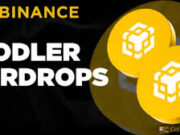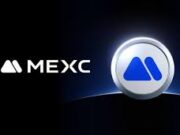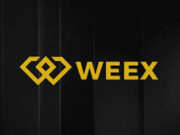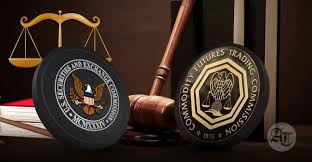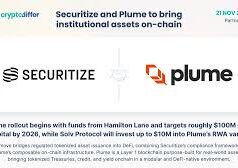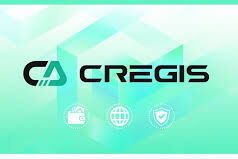The cryptocurrency landscape in the United States is on the verge of a seismic shift. On September 29, 2025, the Securities and Exchange Commission (SEC) and the Commodity Futures Trading Commission (CFTC) will hold a historic joint roundtable in Washington, D.C., to tackle the complex world of crypto derivatives, decentralized finance (DeFi), and prediction markets.
From Rivalry to Collaboration: A Regulatory Turning Point
For years, the U.S. crypto industry has been caught in a tug-of-war between the SEC and CFTC, each claiming jurisdiction over different aspects of digital assets. The SEC treats many cryptocurrencies as securities, while the CFTC views others, like Bitcoin, as commodities. This overlap has created confusion, pushing innovation offshore to jurisdictions with clearer rules.
The September 29 roundtable signals a truce, with both agencies committing to work together to harmonize their approaches. As SEC Chairman Paul Atkins and CFTC Acting Chairman Caroline D. Pham put it, “The work of the SEC and CFTC has never been more intertwined—and the wave of innovation before us never more dependent on the depth of our cooperation” SEC.
This builds on the joint staff statement from September 2, 2025, clarifying that registered exchanges can trade certain spot crypto assets without legal barriers SEC. The era of turf wars may finally be ending—replaced by a unified playbook designed to foster innovation while protecting investors The Block.
Perpetual Contracts: Bringing Offshore Innovation Back Home
One of the most anticipated topics is perpetual contracts—derivatives with no expiration date, widely popular on offshore platforms but largely inaccessible to U.S. traders.
The SEC and CFTC are exploring ways to bring these products onshore under strict investor protection standards. As CFTC Acting Chairman Pham explained, the agencies are considering “concurrent steps” that would allow perpetuals to trade on U.S. regulated platforms CFTC.
Onshoring these contracts could narrow the liquidity gap between U.S. and international platforms, create tighter spreads, and strengthen price discovery. For institutions, that means sophisticated tools under safe oversight. For retail traders, it means safer, more transparent access to products once available only overseas CryptoBriefing.
DeFi in the Regulatory Spotlight
Decentralized finance has long operated in a regulatory gray zone, but that may be about to change. The agencies are considering “innovation exemptions”—temporary safe harbors that allow DeFi platforms to experiment with spot, leveraged, or margined trading while regulators craft permanent rules Mitrade.
Even more notable: regulators acknowledged that self-custody aligns with American values, signaling a willingness to embrace peer-to-peer trading. If structured properly, these safe harbors could encourage institutions to explore DeFi without the fear of abrupt enforcement actions AInvest.
Prediction Markets: Opening a New Frontier
Prediction markets—where users wager on outcomes of elections, sports, or even Fed rate decisions—have been heavily restricted due to overlapping securities and futures laws.
The SEC and CFTC now want to create a framework that allows event contracts under regulated conditions. This could open a brand-new asset class for both retail and institutional traders, while ensuring market integrity MarketsMedia.
By harmonizing oversight, the U.S. could finally catch up with global competitors already innovating in this space BitcoinWorld.
Charting the Path: What’s on the Regulatory Agenda
The roundtable won’t just be talk—it’s aimed at building consensus on several key priorities:
- Harmonizing product and venue definitions to eliminate overlapping rules.
- Streamlining data reporting across exchanges.
- Aligning capital and margin requirements to improve efficiency.
- Portfolio margining frameworks to cut costs by recognizing offsetting positions.
Analysts estimate that such changes could reduce institutional trading costs by up to 40% BitcoinEthereumNews.
Striking a Balance: Innovation vs. Investor Protection
Crafting effective crypto regulation is a balancing act. On one hand, regulators must prevent fraud and protect consumers. On the other, they must allow the innovation that keeps the U.S. competitive.
The agencies have emphasized that their objective is to remove unnecessary barriers without stifling growth AInvest. Done right, this could attract billions in capital inflows and draw crypto entrepreneurs back from overseas hubs like Singapore and Dubai MEXC.
Why Investors and Builders Should Pay Attention
For investors, the regulatory clarity could mean safer access to perpetuals, prediction markets, and DeFi products on licensed platforms. For innovators, it could mean the freedom to build under safe harbors and a clear path to compliance.
By welcoming public input and engagement, the SEC and CFTC are signaling that they want the market’s voice to guide policymaking SEC.
A Defining Moment for U.S. Crypto
The September 29 roundtable is a watershed moment. By addressing perpetual contracts, DeFi, and prediction markets, the SEC and CFTC are setting the stage for the next era of digital finance.
As Acting Chairman Pham put it, “The next chapter of financial innovation is written right here in America” CFTC.
For now, all eyes are on Washington. The decisions made this month could determine whether the U.S. reclaims leadership in crypto innovation—or watches the future unfold elsewhere.













